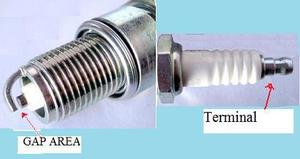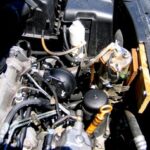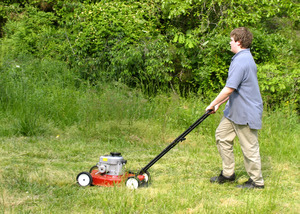Changing your own spark plugs is not an exceptionally difficult task. Newer vehicles require much less in the way of tune-ups and a do-it-yourself plug change can provide significant savings. Improved fuel economy, faster acceleration and easier starting are benefits of changing your spark plugs.
Tools:
- Ratchet, extensions and offsets as needed
- Spark plug gaping tool
- Anti-seize lubricant
- Dielectric grease
Purchase the correct plugs for your make and model of vehicle. Most auto stores will have source books that will help you determine the type of plug you need. Some vehicles require a more heat resistant plug than others do. Varieties in plugs include brands that are more resistant to fouling. Plugs are also available that are designed to last much longer than regular versions.
Wait until the engine has cooled down completely before removing a spark plug. This is critical with modern aluminum block engines. Aluminum expands and contracts more than older materials. This can lead to damage to the internal threads in the block. Spark plugs may bind even in older cast iron blocks if the engine in still hot. A cool engine is also easier to work on, with less chance of burns.
Spark plug gap:
Setting the correct gap on each plug is important. Plugs do not always come with the gap pre-set. Too much gap can make the engine hard to start and cause misfiring. Too small a gap and the plug may not actually fire. The blade should fit snugly between the central electrode and the side electrode. The central electrode is in the center of the tip of the plug. The side electrode, or ground electrode, is connected to the spark plug threads
1 – Remove one plug wire and plug at a time
While this may not seem necessary, it is the best method. It is possible to forget which wire went to a specific plug and having to track down the correct order can be time consuming. This will also reduce the possibility of debris entering the cylinders while the plugs are removed.
2 – Set the gap on the new plug and prepare the plug
- Add a small amount of anti-seize compound to the threaded area of the plug.
- Do not apply the compound to the electrodes. Anti-seize makes removal and replacement easier for future work. It also helps to prevent the plug from binding.
- Apply a small amount of dielectric grease to the top terminal. This will make for better conduction and help prevent the wire from binding to the terminal.
3 – Install the new plug:
Do not over tighten spark plugs. A torque wrench can be used, if you have one available. It will need to be set to the vehicle manufacturer’s recommended torque. As a rule, plugs should be more than just finger tight without applying excess pressure. Spark plugs can break off in the cylinder head.
Tip: Examine each spark plug after you remove it. A visual inspection can tell you a great deal about the engine.
- A heavy layer of black carbon may indicate a dirty air filter or a bad air-to-fuel mixture.
- A heavy coating of oil may be an indication of a leak or a misfiring plug.
- If the electrode is broken it may be an indication of a problem in the cylinder head
- If the electrode looks burnt or melted, the spark plug may not have had a high enough temperature rating.
Note: If you can feel a shock from your spark plug wires while the vehicle is running, replace the plug wires. This means that the insulation on the wires is breaking down or not strong enough. If the wires contact each other, the plugs may misfire.
Tips for hard to access spark plugs:
You may need a ratchet handle with long extensions, offset handles or a swivel head. Most of these additions are not overly expensive and can work wonders in tight or difficult spaces. With some truck models, the easiest access will be through a fender well. You will need a long extension for the ratchet. Other vehicles may even require you to remove the plugs from underneath the vehicle.
Specially designed spark plug sockets are available for vehicles with deeply set plugs. In the case of the Plymouth Breeze, reaching the plugs was easy. There is nothing in the way to interfere. Unfortunately, the plugs are set so deeply that once they are loosened, they are impossible to remove with a regular socket. Reinstallation is also a problem, as the plug will fall out of the socket before it can be threaded into the head.
When you are working with this type of spark plug set up, use a magnetic or padded spark plug socket. The rubber insert inside the socket will hold the plug while it is raised or lowered from the head. As a last resort very long, slim needle nose pliers or an industrial tweezers can be used. Be careful not to damage the top of the spark plug terminal if you use this method.





